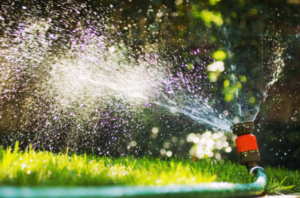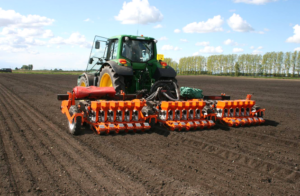Types of agricultural machinery and application scenarios

More agricultural machinery information here
In this blog post, we’ll discuss the types of agricultural machinery and their corresponding usage scenarios.
Irrigation and watering machinery
Irrigation systems are essential in most agricultural activities. They are used to water crops and maintain the ideal moisture level for growth. Some of the common examples of this agricultural machinery include:
- irrigation equipment includes automated systems that contain pumps, sprinklers, drip lines, and other similar structures and tools to ensure adequate and timely watering of crops;
- center pivot irrigation agricultural machinery is commonly used in large-scale farming to distribute water evenly throughout a field using a sprinkler system that rotates around the pivot point in the field’s center;
- fire sprinkler systems, intended to protect agricultural assets from fire, typically consist of pipes linked to a source of cold water and are automatically activated when a certain temperature is reached.
Fertilizing And Pest Control Machinery
Spreading substances is the primary function of most agricultural and farm machinery in both groups. The key distinction between them is the type of substance for which they are meant. Typical examples of such machinery seen on farms include:
- manure spreaders are used to apply fertilizers to crops. They come in different types, including broadcast spreaders, drop spreaders, and pendulum spreaders.;
- slurry tank, or tanker, is a trailer that includes a tank and a pump to mix solids and liquids, like manure and water, for fertilizing fields sustainably and effectively;
- sprayers make applying liquid inputs (fertilizers, pesticides, and herbicides) to crops much easier and more precise.
Equipment For Soil Cultivation And Tillage
These agricultural machinery and equipment reduce the clumps to little pieces and eliminate weeds, resulting in a cleaner and more uniform field surface. They also loosen the soil by turning it over, which makes planting seeds much easier. Among soil cultivation and tillage equipment, the following agricultural machinery stands out:
- cultivators mix the soil and break it down, making well-aerated and weed-free seedbeds;
- cultipackers level planting surfaces by pressing stones into the soil, compacting clumps, and eliminating air pockets;
- plough is agricultural machinery that stirs the soil and buries any unwanted debris, such as weeds or stubble, preparing the field for planting crops;
- rotating tillers break up compacted soil, creating an ideal seedbed for planting seeds;
- harrows improve soil structure by pulverizing it, along with breaking up crop residues and uprooting weeds;
- strip-till aggregates, which combine the advantages of conventional tillage and zero tillage, help to maintain soil structure and reduce erosion.
Planting Equipment
Agricultural machinery for planting loosens the soil, distributes seeds at consistent spacing, and firms the soil afterward. The most common planting machines are:
- seed drills that distribute seeds in furrows at an even rate and depth enable plants to develop uniformly across the field;
- broadcast seeders are best suited for spreading seeds and lime or fertilizer evenly across the field.
- seed cum fertilizer drills deliver seeds and drop fertilizer separately in one drive, ensuring that every plant in the field gets the nutrients it needs.
Equipment For Harvesting And Threshing
These agricultural machinery and implements are intended for crop harvesting in fields or on preliminary drained irrigated lands. Their versatility extends beyond agriculture; for example, they can be used to harvest grass from a golf course fairway prior to its mowing by a lawn tractor. The following harvesting equipment can be distinguished:
- mowers, manual (hand-pushed) or electric agricultural machinery, are used to cut grass and crops;
- reapers, usually pulled by tractors or tillers, allow for the harvest of grain crops in either dry or wet fields;
- threshers separate grains from stalks and chaffs, giving clean grain without minimal breakage or loss;
- combine harvesters tresh, clean, and deposit the grain in one pass, speeding up the harvesting process;
- grain harvesting machines are designed to harvest beans;
- crop harvesting machines make harvesting and processing crop residue a lot less labor-intensive by cutting crops and compressing hay into bales all at once;
- root crop harvester is a comprehensive agricultural machinery for picking up and cleaning potatoes, carrots, beetroots, garlic, onions, and other root vegetables;
- vegetable harvesters are typically intended to cater to particular crop varieties such as head vegetables, leafy greens, and herbs;
conveyor belts are common in agriculture for transferring harvested crops, such as grain or root vegetables, to another point.
Related products
| Choose the right sprocket and chain for your agricultural machinery | |||
| B-Hub Sprockets | C-Hub Sprockets | C-Hub Sprockets | C-Hub Sprockets |
| C-Hub Sprockets | B-Hub Sprockets | Stainless Steel Triplex Row Conveyor Chains With Special Rollers | Stainless Steel Conveyor Chains With Outboard Rollers |
| Conveyor Chains with Outboard Rollers | SP Series Double Roller Chain | Conveyor Chains with Rollers | More products |


